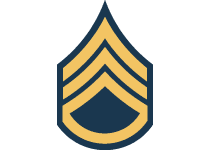The greatness of our Army has always been the ability of our Soldiers who serve in the ranks to rise to the challenge against the odds, in the face of danger, and win.
Julius W. Gates, Eighth Sergeant Major of the Army
Enlisted Ranks
Enlisted Soldiers are the backbone of the Army. They have specific specialties within an Army unit, perform specific job functions and have the knowledge that ensures the success of their unit's current mission within the Army.
VIDEO: ENLISTED RANKS
Enlisted ranks in the U.S. Army. The video below explains what they are, and, most importantly, what level of responsibility is expected of each.
Warrant Officer Ranks
The adaptive technical expert, combat leader, trainer, and advisor. Through progressive levels of expertise in assignments, training, and education, the warrant officer administers, manages, maintains, operates and integrates systems and equipment across the full spectrum of operations.
VIDEO: WARRANT OFFICER RANKS
Warrant Officers are adaptive technical experts, combat leaders, trainers, and advisers. Warrant officers can and do command attachments. The video below explains what Warrant Officers do, and, most importantly, what level of responsibility is expected of them.
Officer Ranks
Commissioned officers are the managers, problem solvers, key influencers and planners who lead enlisted Soldiers in all situations. They plan missions, give orders and assign Soldiers tasks.
VIDEO: OFFICER RANKS
Officers are the senior leaders of the U.S. Army. Commissioned officers are the managers, problem solvers, key influencers and planners who lead enlisted soldiers in all situations; they plan missions, give orders and assign soldiers tasks. There are 12 officer ranks in the U.S. Army. The video below describes the ranks and, most importantly, what level of responsibility is expected of each.
Corps and Division Operations
The U.S. Army is the largest branch of service with a greater variety of units than the other services, each with a different organization and purpose. Therefore, the Army provides the combatant commander with an interlocking array of higher headquarters trained and equipped to apply landpower from the theater level, through the operational level, and down to the tactical employment of various brigades, groups, and battalions. Together the theater Army, corps, and division give the combatant commander several options necessary for the employment of landpower in an interdependent joint force.


Team
The smallest element in the Army organizational structure.
Usually comprised of four Soldiers.
Typically led by a sergeant.

Squad
The second smallest element in the Army organizational structure. Its size is dependent on its function.
2 - 3 teams
Typically led by a staff sergeant.

Platoon
A basic combat unit capable of maneuvering in the conduct of combat operations.
2 - 4 Squads
Led by a lieutenant, assisted by a platoon sergeant that is a sergeant first class.

Company
A cohesive tactical sized unit that can perform a battlefield function on its own. It is capable of receiving and controlling additional combat, combat support or combat service support elements to enhance its mission capability.
3 - 5 Platoons
Normally commanded by a captain, a first sergeant is the commander’s principal assistant.
Ground or air cavalry units (armor and aviation units specifically trained for reconnaissance missions) refer to these elements as troops. Field artillery and air defense artillery units refer to these elements as batteries.

Battalion
A unit that is both tactically and administratively self-sufficient.
3 - 5 Companies
In warfighting, battalions are capable of independent operations of limited duration and scope.
Commanded by a lieutenant colonel with a command sergeant major as the primary NCO assistant.
A battalion task-force is a battalion-size unit with additional companies attached in direct support to enhance mission capability.
An armored or air cavalry unit of equivalent size is referred to as a squadron.

Brigade
A significantly large unit that can be employed on independent or semi-independent operations.
3 or more Battalions
Normally commanded by a colonel although in some cases a brigadier general may assume command. The command sergeant major is the principal noncommissioned officer assistant.
Brigades are comprised of multiple battalions that generally include the brigades primary combat arm, as well as sustainment and supporting functions.
Armored Cavalry units of this size are referred to as regiments.
Special Forces units of this size are referred to as groups and Ranger units are regiments.

Division
Performs major tactical operations and conduct sustained battles and engagements.
3 Brigades
Categorized by one of five types: cavalry, armored, infantry, airborne and artillery.
Commanded by a major general assisted by two principal brigadier generals who perform duties as assistant division commanders - one for maneuver and one for support. The command sergeant major is the principal NCO assistant.
Divisions are comprised of two to three maneuver brigades, a sustainment brigade, and a combat aviation brigade.

Corps
The deployable level of command required to synchronize and sustain combat operations and provides the framework for multinational operations.
2 - 5 Divisions
Provides command, control and logistical support.
Commanded by a lieutenant general, assisted by a command sergeant major and an extensive Corps staff.
Three Corps in the active Army - three with headquarters in the Continental United States (I, III, and XVIII Corps).





























